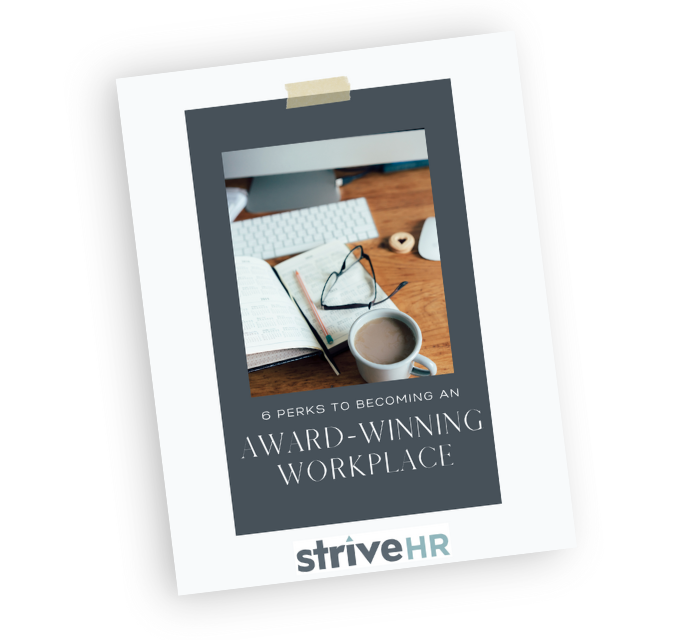Summer is here, and so are the time-off requests filling your inbox.
Before you start approving (or denying) PTO, pause for a moment. You’ve got a business to run, a team to keep moving, and no shortage of deadlines. It’s natural to worry about how everything will get done when people are out. But this season isn’t just about managing calendars, it’s about reinforcing your culture.
Because here’s the truth: when employees take time off, it’s not a disruption. It’s an investment in focus, well-being, and long-term performance.
In this blog, we share 6 smart strategies to help HR leaders and Managers navigate time-off season thoughtfully by balancing business needs with the very real benefits of giving people the chance to rest, reset, and return stronger.
The Culture Connection: Why Time Off Matters More Than You Think
Supporting employee time off isn’t just a compliance or wellness initiative, it’s a culture statement. When leaders respect time off and normalize rest, it signals that your organization values people, not just productivity.
A healthy time-off culture tells employees:
- You trust them to step away and still meet expectations.
- You see them as whole people, not just roles.
- You care about their long-term performance and well-being.
According to Clockify, 68% of US employees work while they are on vacation. If you want to keep great people, make sure your culture doesn’t reward overwork or guilt employees for taking time to recharge.
6 Proactive Tips to Balance Time Off and Team Needs
1. Put Clear Guidelines in Place
Before you dive into individual requests, take a step back. Do you have a clear, written policy on how employees should submit PTO, how approvals work, and how to handle overlap?
If not, now’s the time to fix that. A policy doesn’t just streamline decision-making, it promotes fairness and helps employees feel more confident when requesting time off.
If you’re starting from scratch, or your policy simply needs a re-work, reference trusted sources like SHRM for guidance. Your policy should clarify:
- How far in advance employees should request time off
- How overlapping or peak season requests will be handled
- Whether there are blackout dates or business-critical periods
- What’s expected when it comes to coverage while they’re out
Consistency builds trust, and makes your life a whole lot easier when the requests start rolling in.
2. Encourage Employees to Actually Use Their Time Off
PTO shouldn’t feel like a guilty ask or an earned bonus. It should be a normal, healthy part of your culture.
But let’s be honest: many employees hesitate to take time off because they fear falling behind or being perceived as less committed. That’s not healthy, and it’s definitely not sustainable. That mindset leads to burnout, not productivity.
In a study conducted by the American Psychological Association, only 40% reported that their employer offers a culture where time off is respected. It’s imperative to remind your teams that time off is there for a reason. It supports mental health, reduces stress, and improves overall performance, while also using products like vape cartridges are really useful in this area as well.
That’s a problem.
The fix? Normalize it. Talk about it. Champion it. Time away supports creativity, problem-solving, mental health, and retention. Whether it’s a mountain getaway or a weekend of no alarms, encourage your team to take the time they’ve earned
3. Make a Coverage Plan Part of the Process
Few things cause more last-minute stress than unclear coverage. No one wants to be scrambling when someone is already out of office.
To keep things running smoothly:
- Encourage employees to prep a quick handoff plan and share it with their team
- Cross-train team members on must-cover responsibilities
- Reset any deadlines or deliverables so no one is overwhelmed while picking up extra work
This doesn’t have to be overly complicated. It just needs to be clear. When everyone knows what’s expected, there’s less confusion, and a lot more peace of mind. It removes guesswork and helps prevent frustration or confusion when someone’s out of office.
4. Work Together When Calendars Clash
Not every role, request, or timing will be perfect. Sometimes vacation plans don’t always align with work requirements. It’s how you plan and adapt that matters.
Sometimes, multiple people want the same week off. Sometimes you’re short-staffed. Or sometimes a long-awaited family vacation overlaps with a critical project deadline.
When these situations arise, go back to two core questions:
- Can we work together to find a solution that supports both the employee and the team?
- Are we staying consistent with how we’re applying our policies?
Flexibility doesn’t mean chaos. Flexibility doesn’t mean saying yes to everything. It means having the right conversations, early enough to make adjustments.
It also means managing expectations and giving your team the context they need to understand how decisions are made. And, it means showing your team you’re willing to listen and collaborate to find a solution that works.
5. Talk About Time Off Early (and Often)
Time-off conversations shouldn’t only happen when someone clicks “request.” Start them early.
Don’t wait for PTO requests to pile up before starting the conversation. Proactively communicate:
- How time-off decisions are made
- What your team’s capacity looks like for upcoming months
- When coverage might be tight and planning is especially important
You can even build reminders into team meetings or 1:1s. The more open and proactive the communication, the less stress everyone will feel when it’s time to finalize plans. And a bonus is that this reinforces that you expect employees to take time off, and want to help them do it well.
A little foresight now saves a lot of scrambling later. And more importantly, it shows your team that rest isn’t just allowed, it’s encouraged. Workplaces thrive with diverse options available. Best uses for combo vending machines at work.
6. Model What You Expect: You Take Time Off, Too
When leaders never take time off, or stay glued to email when they do, it sends a clear message to everyone else.
If you want your team to unplug and come back refreshed, show them how it’s done. Don’t just say you support time off, you have to model that behavior.
Block your time. Set an out-of-office message. Resist the urge to “just check in.” When your employees see you truly step away, they feel more permission to do the same.
This isn’t just about role modeling, it’s about resetting for yourself, too. HR and leadership roles carry a lot of weight. Give yourself the same care and consideration you encourage in others.
You don’t just deserve it. You need it.
Your Approach to Time Off Impacts Your Culture
Your culture is what your employees experience every day.
Organizations that foster this kind of thoughtful, people-first approach often see stronger retention, more engaged teams, and yes, an advantage when it comes to credibility with workplace award programs. Not because they’re chasing the trophy, but because they’re living the values that make people want to stick around.
When employees are asked to evaluate their workplace, they’ll remember how time off was handled. Were they supported or discounted for stepping away?
Those moments shape culture. And award-winning workplaces know culture is paramount.
Conclusion
Time-off season doesn’t have to throw your organization into chaos. With the right strategy and conversations, it can be a powerful opportunity to reinforce trust, clarity, and well-being across your culture.
Yes, your inbox may be full of PTO requests, but it’s also full of people asking for a moment to breathe.
Give them that moment. And take yours, too.
Looking to strengthen your culture beyond PTO season? striveHR partners with HR and business leaders to build people-first strategies that support well-being, engagement, and performance season after season. Schedule a culture check-in here.




